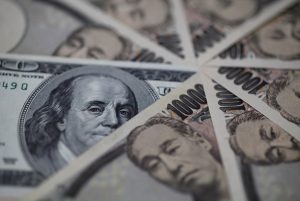The foreign exchange market (Forex) is the largest and most liquid financial market in the world, with daily trading volumes exceeding $6 trillion. The value of currencies is influenced by various factors, including economic policies implemented by the United States. As one of the world’s leading economies, U.S. economic policies have far-reaching impacts on Forex trading. This article delves into the key areas where these policies intersect with the Forex market and provides a comprehensive analysis and comparison of their effects.
Introduction to Forex Trading

Forex trading involves the exchange of one currency for another, with traders aiming to profit from fluctuations in currency values. The market operates 24 hours a day, five days a week, and is influenced by a wide array of economic, political, and social factors. Central among these influences are the economic policies of major economies, particularly the United States.
Key U.S. Economic Policies Affecting Forex Trading
Monetary Policy
Monetary policy in the United States is primarily managed by the Federal Reserve (Fed). The Fed’s actions, including setting interest rates and conducting open market operations, have a direct impact on the value of the U.S. dollar. When the Fed raises interest rates, it often leads to an appreciation of the dollar as higher rates attract foreign investment, seeking higher returns. Conversely, lowering interest rates can depreciate the dollar as investors look elsewhere for better yields.
Fiscal Policy
U.S. fiscal policy, determined by government spending and taxation decisions, also plays a significant role in Forex trading. Expansionary fiscal policies, such as increased government spending or tax cuts, can stimulate economic growth but may also lead to higher inflation. Higher inflation can depreciate the dollar if it outpaces the economic growth. On the other hand, contractionary fiscal policies, which aim to reduce spending or increase taxes, can strengthen the dollar by slowing down inflation and stabilizing the economy.
Trade Policy
Trade policies, including tariffs, trade agreements, and sanctions, can significantly impact the Forex market. For instance, trade tensions between the U.S. and other countries can create volatility in currency markets. Policies that favor exports can strengthen the dollar by improving the trade balance, while protectionist measures can lead to currency devaluation as they might result in retaliatory actions from trading partners.
Economic Data Releases
Regularly scheduled releases of economic data, such as GDP growth rates, employment figures, and inflation statistics, can cause significant movements in Forex markets. Positive economic data from the U.S. typically strengthens the dollar, as it suggests a robust economy, whereas negative data can weaken the dollar.
Analysis of U.S. Economic Policies on Forex Trading
Historical Impact of Monetary Policy Changes
The impact of U.S. monetary policy changes on Forex trading is well-documented. For instance, during the period of quantitative easing (QE) following the 2008 financial crisis, the Fed’s purchase of large quantities of government securities aimed to lower interest rates and stimulate the economy. This led to a depreciation of the dollar as the increase in money supply lowered its value.
Conversely, when the Fed began to taper its QE program and eventually raised interest rates starting in 2015, the dollar appreciated significantly. This is a clear illustration of how monetary policy shifts can drive substantial movements in the Forex market.
Fiscal Policy Case Study: Tax Cuts and Jobs Act of 2017
The Tax Cuts and Jobs Act of 2017 serves as a notable example of fiscal policy influencing Forex trading. The act, which reduced corporate tax rates and aimed to repatriate overseas profits, initially led to a stronger dollar due to expectations of increased economic activity and investment in the U.S. However, concerns over the resulting budget deficits and potential inflationary pressures eventually led to some volatility and a mixed impact on the dollar’s value.
Trade Policy and Forex Volatility: The U.S.-China Trade War
The trade war between the U.S. and China, characterized by mutual tariff increases, had a profound impact on Forex markets. The uncertainty and tension led to increased volatility, with the dollar fluctuating in response to new tariffs and negotiations. This period highlighted how trade policies can create an unpredictable environment for Forex traders.
Comparative Analysis of U.S. Economic Policies on Forex Trading
Monetary vs. Fiscal Policy
| Aspect | Monetary Policy | Fiscal Policy |
|---|---|---|
| Primary Tools | Interest rates, open market operations | Government spending, taxation |
| Direct Impact on Forex | High (through interest rates and inflation expectations) | Medium (through economic growth and budget deficits) |
| Short-term Effects | Immediate market reactions to rate changes | Gradual impact based on policy implementation |
| Long-term Effects | Influences long-term inflation and currency strength | Affects economic growth and fiscal stability |
| Example | Fed rate hikes in 2015 | Tax Cuts and Jobs Act of 2017 |
Trade Policy vs. Economic Data Releases
| Aspect | Trade Policy | Economic Data Releases |
|---|---|---|
| Primary Tools | Tariffs, trade agreements, sanctions | GDP, employment, inflation statistics |
| Direct Impact on Forex | High (through trade balance and investor sentiment) | High (through market expectations and reactions) |
| Short-term Effects | Creates volatility based on policy announcements | Immediate impact following data release |
| Long-term Effects | Affects trade relationships and economic stability | Shapes long-term market expectations and currency trends |
| Example | U.S.-China Trade War | Monthly Non-Farm Payroll reports |
Conclusion
U.S. economic policies have a profound impact on Forex trading, influencing currency values through various mechanisms. Monetary policy, with its direct impact on interest rates and inflation, is a primary driver of short-term and long-term currency movements. Fiscal policy, through government spending and taxation, shapes economic growth and fiscal stability, affecting the dollar’s value. Trade policies, especially in the context of trade wars, introduce volatility and uncertainty in Forex markets. Lastly, economic data releases provide traders with essential information that can cause immediate market reactions.
Understanding these policies and their implications is crucial for Forex traders seeking to navigate the complexities of the market. By analyzing historical trends and comparing different policy impacts, traders can better predict currency movements and make informed trading decisions.
Analysis Table: Historical Impact of U.S. Economic Policies on Forex Trading
| Policy Type | Policy Example | Period | Impact on Forex |
|---|---|---|---|
| Monetary Policy | Quantitative Easing (QE) | 2008-2014 | Depreciation of the dollar due to increased money supply and lower interest rates. |
| Monetary Policy | Interest Rate Hikes | 2015-2018 | Appreciation of the dollar as higher interest rates attracted foreign investment. |
| Fiscal Policy | Tax Cuts and Jobs Act | 2017 | Initial strengthening of the dollar due to economic growth expectations, followed by mixed effects due to concerns over budget deficits and inflation. |
| Trade Policy | U.S.-China Trade War | 2018-2019 | Increased volatility in the Forex market with fluctuations in the dollar’s value in response to new tariffs and trade negotiations. |
| Economic Data | Monthly Non-Farm Payroll Reports | Ongoing | Immediate market reactions with positive data strengthening the dollar and negative data leading to depreciation. |
Comparative Table: Impact of Different U.S. Economic Policies on Forex Trading
| Policy Type | Primary Tools | Direct Impact on Forex | Short-term Effects | Long-term Effects | Example |
|---|---|---|---|---|---|
| Monetary Policy | Interest rates, open market operations | High | Immediate reactions to rate changes | Influences long-term currency strength | Fed rate hikes in 2015 |
| Fiscal Policy | Government spending, taxation | Medium | Gradual impact | Affects economic growth and fiscal stability | Tax Cuts and Jobs Act of 2017 |
| Trade Policy | Tariffs, trade agreements, sanctions | High | Creates volatility | Affects trade relationships and stability | U.S.-China Trade War |
| Economic Data Releases | GDP, employment, inflation stats | High | Immediate impact following release | Shapes long-term market expectations | Monthly Non-Farm Payroll reports |
Understanding these intricate relationships helps Forex traders navigate the market more effectively, making informed decisions based on the anticipated impacts of U.S. economic policies












